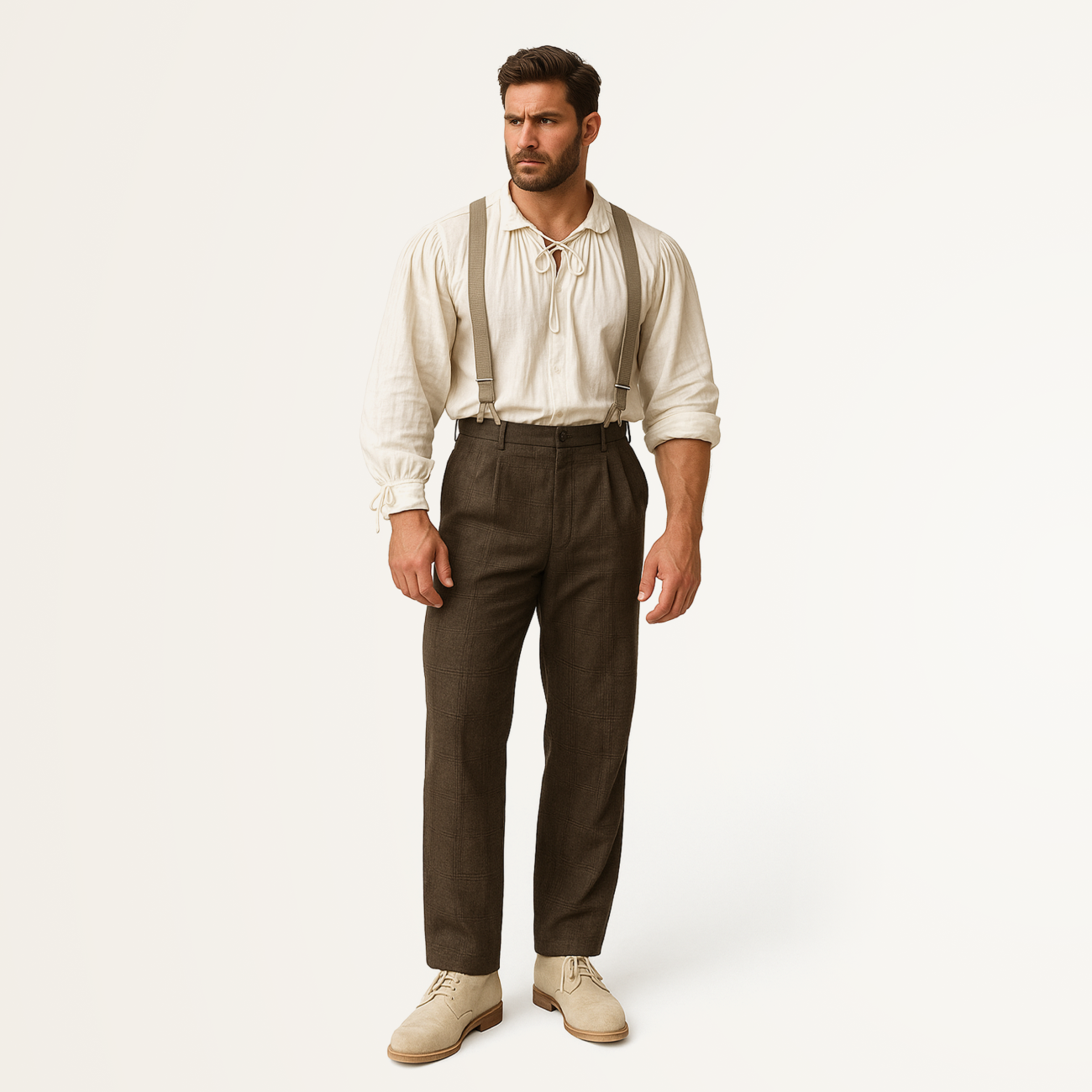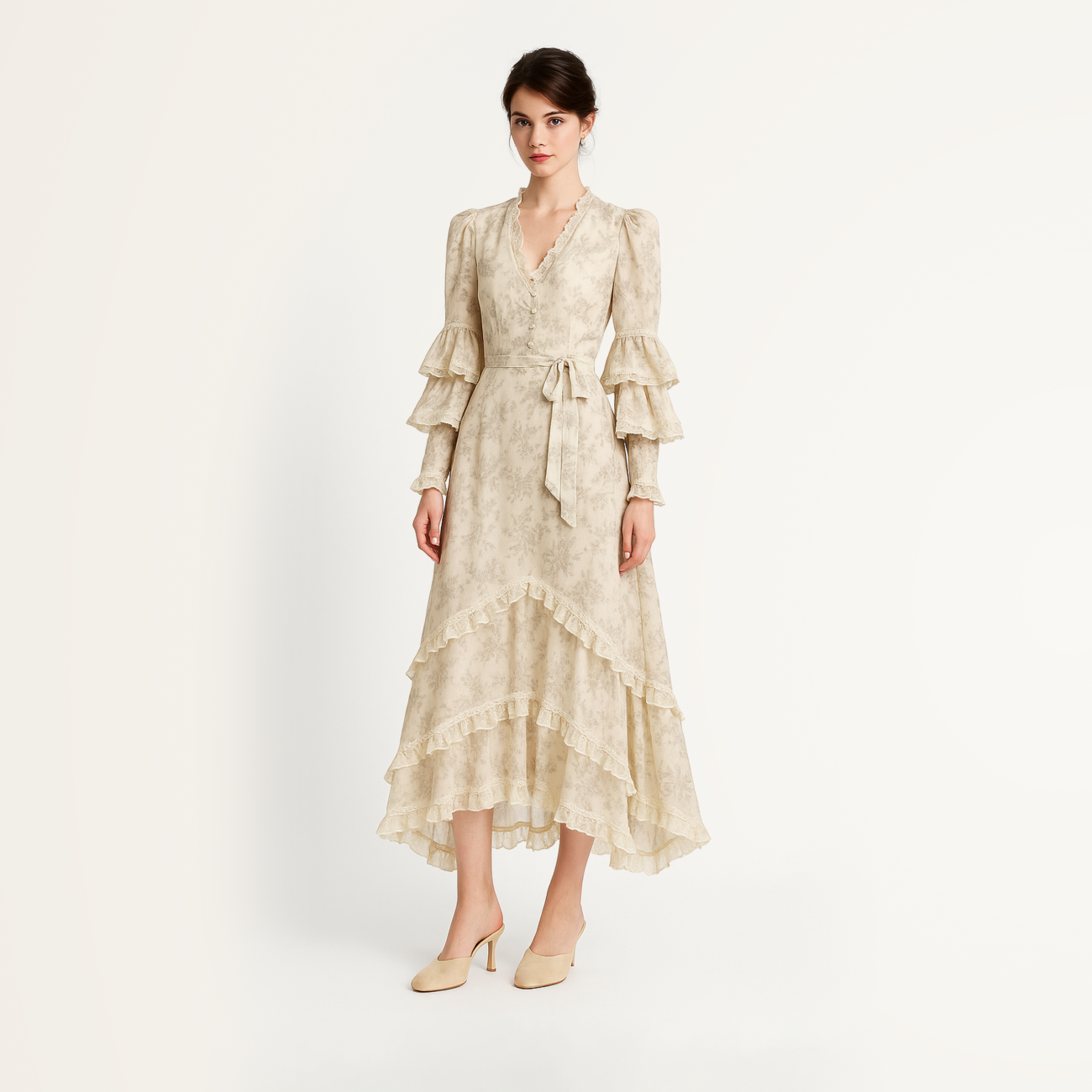Pastoral
Pastoral Style, also known as the countryside or rustic style, embodies a romanticized vision of rural life and idyllic nature, blending nostalgia, simplicity, and harmony with the natural world. At its core lies a longing for authenticity and a rejection of excessive urbanization and technological overload. The pastoral aesthetic expresses a desire to retreat from the hustle of city life and reconnect with nature, drawing inspiration from meadows, fields, old country homes, and farmhouse charm. It evokes peace, warmth, and a sense of well-being found in the simplicity and coziness of rural living.
History
The history of pastoral style reflects a deep yearning to return to nature and harmony, beginning in the 18th century when the French aristocracy, weary of opulent etiquette and excess, began to create romanticized “villages” around themselves. Marie Antoinette, for instance, built the Hameau de la Reine at Versailles—a symbolic “peasant” hamlet where she and her circle could escape court life and immerse themselves in an idealized rural world. They wore loose dresses adorned with delicate floral prints and lace, establishing an iconic image for the pastoral aesthetic.
In England, a similar movement took shape in the form of country style, enriching the pastoral theme with warmer and more practical elements. This version, more rugged in spirit, gained popularity through its associations with resilience and the simplicity of English rural life. Tweed jackets, checked fabrics, coarse wool, and sturdy leather shoes became key elements, emphasizing durability and groundedness.
The 19th century, marked by rapid industrialization, gave rise to a renewed wave of pastoralism: in the face of sweeping change, artists and poets expressed a deep nostalgia for a lost connection to the land, portraying rural scenes as idyllic sanctuaries in contrast to urban noise and pollution. Romantic pastoral art and literature idealized the countryside as a refuge of peace and authenticity.
In the mid-20th century, after World War II, pastoral style experienced another revival, driven by a renewed appreciation for sustainability and nature. Designer Laura Ashley played a notable role in this resurgence—her dresses with small floral prints and natural fabrics captured the spirit of traditional rural living and became synonymous with comfort and nostalgia. This wave was also influenced by the growing environmental movement and the rise of hippie culture, both of which valued natural materials and simplicity of form.
Since the early 21st century, pastoral style has been reinterpreted in light of increasing interest in sustainable fashion. Brands inspired by nostalgia and the pursuit of harmony are bringing modern perspectives to the style while preserving its core qualities—lightness, natural fabrics, and relaxed silhouettes. Today, the pastoral style is not only a visual aesthetic but also a lifestyle philosophy rooted in reconnection with nature and mindful living, making it particularly relevant in the age of eco-consciousness and slow consumption.
Signature elements of the style
Color palette
The primary colors are soft, natural tones that evoke warmth and coziness. The palette includes cream, beige, olive, delicate shades of pink and blue, muted greys, and browns. Colors like white, dusty blue, and grassy green are also frequently used, creating a harmonious connection with nature.
Prints
Pastoral prints are nature-inspired: gentle floral patterns, botanical motifs, checks, stripes, and even small polka dots. Daisies, lavender, roses, and wildflowers are common sources of inspiration. Other popular prints include depictions of animals such as birds or hares, typical of rural and countryside life.
Textures
The main fabrics are linen, cotton, wool, and sometimes heavyweight cotton sateen. These materials emphasize the natural essence of the style, offering soft, tactile surfaces that evoke comfort and warmth. Lace and embroidery are also commonly used, adding a sense of femininity and refinement.
Cuts & silhouette
Pastoral silhouettes are loose and comfortable. Key pieces include free-flowing dresses with empire waists, floor-length skirts, ruffled blouses, and lightweight cardigans. A defined waistline, puffed sleeves, ruffles, and gathers are signature elements. The clothing is often relaxed in fit, emphasizing ease of movement and a sense of laid-back elegance.
Wardrobe essentials
- Dresses and sundresses with floral prints and loose silhouettes, often featuring an empire waist or a belt to accentuate the waistline.
- Maxi skirts made of lightweight cotton or linen, often adorned with ruffles and small floral patterns.
- Shirts and blouses with delicate details—ruffles, lace, or buttons made from natural materials.
- Cardigans and vests crafted from natural wool, adding a sense of coziness and warmth to the look.
- Coats and capes in plaid or featuring wool collars—ideal for cooler seasons.
- Boots and ankle boots made of suede or natural leather, often with a low heel to emphasize the effortless ease of the outfit.
Substyles
- French Pastoral: A more elegant and romantic interpretation of pastoral style, emphasizing softness and lightness of form. It features predominantly light hues and delicate floral prints.
- English Country: Richer colors and textures with a focus on check patterns and warm wool fabrics. This substyle includes elements of hunting attire — rugged boots, riding trousers, and dark cardigans.
- Country Chic: Adds modern elements and fashionable accents to the pastoral style. It includes more structured wardrobe pieces such as blazers and trench coats, adapted to rustic themes.
Email: support@belt-app.com


















